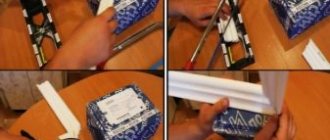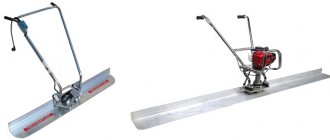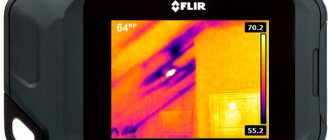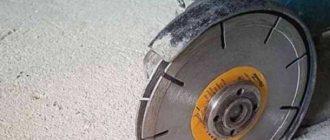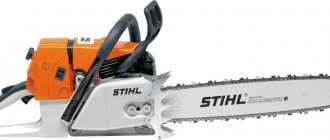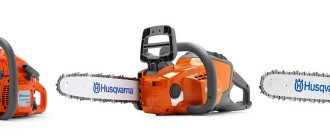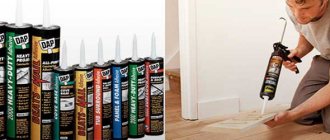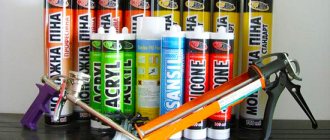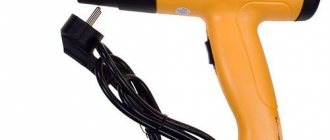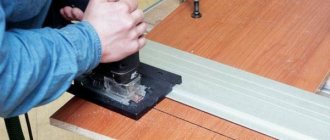What are “liquid nails” and how to use them
The popular name “liquid nails” is firmly rooted, although in fact it is a type of glue used in construction and during construction and installation work (CEM). The name comes from the English language, which means a direct translation of Liquid Nails - liquid nails.
If you use a gun, the work will be easier
In Russia, a similar glue appeared in the mid-90s and gained popularity among professional builders and in everyday life among folk craftsmen. Russian liquid nails have successfully entered the building materials market, but if you do not know how to use liquid nails correctly, you can ruin the structures being glued together. It is important to understand what the adhesive described below is and how to use it. You also need to know how and with what liquid nails are washed to eliminate inaccuracies in the work.
Correct use of LG stems from an understanding of the properties. Since it is an adhesive material, its task is to glue various materials and structures together. Liquid nails help in carrying out construction and installation work, save time, and increase the efficiency of labor costs. These types of glue consist of various polymer compounds, the main one of which is synthetic rubber. An important advantage is that the adhesive does not pierce the structures being glued, does not rust like real nails and does not require the use of a hammer. The big advantage of LG is the bonding of materials of dissimilar structure to each other - ceramics, gypsum, wood and concrete. Therefore, the area where LGs are used is wide:
- Repair work when finishing premises.
- Construction.
- Interior design.
- Furniture production and interior.
Advantages and disadvantages of the pistol
The advantages of devices for mounting solutions include:
- Smooth, fast and accurate formation of the adhesive seam.
- Possibility of quickly changing glue tubes.
- Easy to use without professional skills.
- Use on hard-to-reach and difficult surfaces.
- Simple design, does not require additional equipment.
The disadvantages include:
- High cost of professional equipment.
- After use, regular cleaning of devices with special solutions is required.
- Storage.
- If batteries are used, they must be constantly changed and charged.
Where and how to use liquid nails
Since the requirements for the adhesive material are different in different situations, the modifications of such adhesive differ. Liquid nails are produced, varying in price and having different qualities and characteristics. The main property is how much load the structure glued with this composition can withstand. The adhesive ability of the material determines the quality and cost. Therefore, when purchasing liquid nails, you should understand what loads they must withstand, what materials need to be fastened and how to use liquid nails. You should not overpay by buying expensive material if you need to perform simple steps.
LG can be used to glue fallen tiles
Here are the recommended instructions for the use and application of LG:
- Initially, study the instructions included with the material. Since the adhesive material is based on both solvent and water, the work technology will require certain actions. In the first option, you should make sure that the rooms where the work is carried out are well ventilated or carry out the work outside the room. With water-based glue, work is performed at a temperature not lower than +5 degrees.
- The surfaces to be bonded are thoroughly degreased and cleaned, since dirty, dusty and wet surfaces do not adhere well to each other. Better bonding will be achieved by applying small notches on the surfaces to be glued - rough surfaces provide a high-quality connection.
- To accurately apply glue, use a mounting gun similar to that used when applying construction foam.
- The application of LG is carried out pointwise or in strips along the surface to be bonded, depending on the size of the structures being bonded.
- The surfaces with the applied glue are pressed tightly against each other with force and fixed in this position for a certain period of time (the duration is indicated on the packaging). Maintain the connection until completely dry. Sometimes it will take about a day.
- Excess and squeezed out glue residues are removed with a damp cloth.
It is necessary to remember about the shelf life of LG, which does not exceed one year from the date of release of the glue. Therefore, you should not stock it in large quantities for future use.
How to remove the solution
Even when working with a gun, there is a possibility that glue will get on furniture, hands or other elements in the room. In this case, you will need to remove it immediately. To do this, it is advisable to use a solvent, but this option is only suitable for quickly removing fresh glue.
If the adhesive has already hardened, then only a special cleaner is used to remove it, and you can also use a scraper, but it can damage the coating.
A liquid nail gun, the instructions for use of which are indicated above, is considered an excellent choice if you need to use a high-quality adhesive to connect different specific surfaces. It greatly simplifies this procedure, and also ensures that the solution does not get on other objects in the room where the work is being carried out.
We recommend: Types and sizes of paint brushes for painting different surfaces
Silicone sealants
and
real nails
are packaged in the form of cylindrical tubes and it is very difficult to squeeze out the sealant. Special pistols were invented for this purpose. For easy and convenient application, especially in hard-to-reach places. Their function is also similar to that of a medical syringe.
This sealant is needed for sealing joints and crevices in bathrooms between the sink and wall, bathtub and wall, tile joints with bathtubs and other plumbing fixtures. In toilets, sealing of joints between the flowerpot (toilet) and the floor. In the kitchen for joints between the countertop and the kitchen apron, sink, tile, gas stove. For joints between windows and slopes, window sills.
It is a good protection against moisture penetration, prevents the development of fungus and mold, and repels insects.
For each type of work there is a special sealant with selected components, read on the tube.
How to choose and use a pistol for burning gas correctly
When using liquid nails, it is recommended to apply them using a specialized nail gun. This will allow you to more accurately apply the composition to the surfaces to be bonded and will prevent unnecessary consumption of material. The principle of operation of a construction gun is similar to using a syringe, so even a beginner can use it. There are some different modifications of mounting guns: with and without reverse stroke of the piston. The former are more often used in domestic conditions, with low glue consumption, and the latter - on an industrial scale.
There are numerous varieties of liquid nails available in stores. An inexperienced person encountering this material for the first time will have the difficult task of choosing the right glue. According to the principle: to be inexpensive and “angry”. They start from the instructions for using LG, which are attached to the product or printed on the packaging, but this will take more than one hour. Sales consultants are not always competent to clearly make a choice. Therefore, before going to the store, you should prepare in advance.
LG is used to seal the bathroom
Here are a few criteria and subtleties on the basis of which LG is chosen:
- For fastening heavy structures - finishing with stone or porcelain stoneware, silicone or neprene-based adhesives, such as “Moment Montazh” (Henkel), are better suited.
- For fastening materials that do not have a large specific gravity, such as polystyrene, plastic, water-based LGs, such as “Moment Installation Super Strong,” are more effective.
- Water-based LGs are not suitable for fastening polypropylene, polyethylene, Teflon and other similar materials.
- Neoprene-based adhesives (LN601 Macco or Multi-Purpose) are the most versatile for indoor work. They perfectly glue plywood, plasterboard, wooden materials, as well as plastic, metal and chipboard. But they are not at all suitable for installing and fastening mirrors/tiles in rooms with high humidity.
Video review for craftsmen:
Which liquid nails are best to use?
Today, the buyer is offered several types of liquid nails. The cost is determined depending on the type and purpose.
Deciding which type to use can be difficult
A common type is water-based nails. The main purpose is to fasten materials with a porous surface. The disadvantage of such nails is that they cannot be used in rooms with high humidity. More precisely, you can use them there, but they take a long time to dry, especially since under constant exposure to moisture the nails lose their adhesion properties and, as a result, will not hold the surfaces to be glued together.
An example of use is gluing decorative elements to the ceiling. These nails are cheap due to the restrictions on the types of work where they are used.
The second type, which is based on an organic solvent, is unpleasant due to its pungent odor; safety precautions must be observed when working with them. Excessive saturation with vapors leads to loss of consciousness and other health problems. But this look is universal. A distinctive feature is high strength and reliability. Liquid nails of this type can withstand a lot of weight.
The cost of these nails is slightly higher than water-based compounds.
What are liquid nails for?
The type of connector in question is an adhesive that provides an instant connection between two parts. The basis of the material is a silicone substance, which is located in special cylindrical cylinders or containers. The special container in which the composition is located prevents air from penetrating inside.
This is interesting!
When the substance interacts with air, it dries instantly, so the container should be opened only before use.
A liquid nail gun is needed to squeeze the adhesive out of the container. “Liquid nails” got their name due to the reliable connection of the materials being glued together. In addition to high bond strength, the substance also allows for high bonding speeds. A connection using this material can only be compared with nails, which is where the corresponding name comes from.
The material is used not only in construction and repair, but also in everyday life, for example, for gluing plaster, foam, plastic and other structures. Liquid nails are similar to a sealant that is designed to seal seams. Both materials are supplied in the same containers, only they have different compositions and purposes. If liquid nails are intended for quick and reliable connection of parts, then the sealant serves as a seal. It is used to seal cracks in windows, holes, etc. They differ not only in composition and purpose, but also in price. The price of sealants is 2-3 times less than that of liquid nails (when comparing materials of the same volume).
This is interesting!
Liquid nails, compared to silicone, are absolutely harmless and safe.
When using them, you do not need to wear a respirator, since they are odorless and can be used in both residential and non-residential premises (depending on the type used). The only thing that these compositions have in common is a mounting gun, which is designed to use the composition, that is, to squeeze the components out of the container. Squeezing the composition out of the container is ensured by a special round rod at the bottom of the container, so it is impossible without a special device. That is why special guns for liquid nails are used.
Advantages of liquid nails: why they are convenient to use
In total and in terms of the volume of work, liquid nails are inferior to regular nails, although sometimes the opposite effect is obtained. It is more profitable to use liquid nails. If we are talking about aesthetics, then ordinary nails, no matter how hard they are driven in, are visible, so additional effort and money will be required to hide the heads.
Liquid nails easily hide joints and are not visible. Liquid nails look like a whitish or clear paste that is squeezed onto the attachment point. Moreover, they are fixed in a small amount, but there are enough attachment points. Depending on the type of surfaces that are attached, the step is from 3 to 15 cm.
Advantages of liquid nails:
- Versatility - they can be used to fix any material;
- Non-toxic - even solvent-based nails are not harmful once completely dry;
- Moisture resistance - moisture is not a problem for such a material, but for latex-based nails the opposite is true;
- Holding a load of about 100 kg per square meter is a useful tool for various jobs;
- Liquid nails, unlike ordinary nails, are easy to apply and it is difficult to damage the surface with them; in addition, if you do not allow them to harden, wiping the nails off the surface will not be difficult with a damp cloth.
Liquid nails are distinguished by their long-term storage. They start work at any time, they do not need special training or specialized tools.
Area of use and differences between types
Liquid nails are popular in construction and renovation. Purchase them for any task. The cost is low, equal to half the cost of polyurethane foam.
A common example of using liquid nails is fastening materials to brick structures, gluing wooden surfaces, fixing fiberboard and chipboard sheets. Nails are also used for gluing ceramics, polystyrene, glass or even metal; with their help it is easy to glue foam.
A useful function due to which liquid nails are valued by professional builders is gluing surfaces that do not fit tightly together. When using liquid nails, to fix such surfaces you will need to squeeze out a little more from the tube.
Restrictions on the use of liquid nails - they are not used for gluing damp or damp wood; they cannot be used to glue an aquarium, not even because of constant contact with water, but because of the slow decomposition and subsequent poisoning of the inhabitants. Silicone sealant is suitable for these purposes.
Liquid nails are used in small decorations, when you need to efficiently but discreetly fix an element on a wall or ceiling, glue a torn part, etc.
Liquid nails are purchased from different manufacturers and in different volumes, which also affects the price.
If you perform a small amount of work, then a minimum amount of liquid nails is enough; for a large front, purchase a large tube. The larger the volume, the lower the total cost.
Rules for using LG
To achieve the effect of using liquid nails, apply them to a dry and grease-free surface.
Apply either pointwise with small increments, or in stripes. Do this quickly so that you can then press the surfaces to be glued together. They are fixed in a tight position to each other for several minutes (2-3), after which it remains to wait for complete drying.
To find out how long liquid nails take to dry, the answer to this question is on the label. Depending on the manufacturer and type of nails, the time varies. This period lasts from 18 hours to a day. During this time, they do not create additional load on the bonded surfaces.
Users make the same mistake, which does not give a positive effect and increases the consumption of nails. They are applied to only one surface, the second is degreased and cleaned of dust.
Nails are applied using a special gun, which is designed for gluing materials in hard-to-reach places.
Squeeze out liquid nails without it, pressing on the bottom with a suitable object. But it is worth cautioning: the bottom will be damaged and then the liquid nails will leak out, making it impossible to use them.
How to use liquid nails: with and without a gun
When carrying out repair and construction, finishing, installation work, as well as work on decorating a room, construction glue is used, better known in everyday life as liquid nails - Liquid Nails. This special construction adhesive is made on the basis of polymers and rubber and is supplied to the market in tubes of various capacities or in cylindrical cartridges (tubes). For the convenience of working with cartridges, it is customary to use a special construction (installation) gun for liquid nails, which is designed for dosed application of glue to the surfaces to be glued.
Use LG correctly!
This gun is used for working with various sealants, which are packaged in similar special tubes with a standard volume of 310 ml. This tool got its name because of the principle of operation - the adhesive composition is applied by pressing on the trigger, which is why it is compared with the weapon of the same name. Although the process of applying glue itself is more similar to the operation of a syringe.
When choosing liquid nails, study the instructions on the packaging to find out whether this construction adhesive is suitable for the types of surfaces that are to be glued.
If the work is planned to be carried out outdoors or in rooms with high humidity, then choose a construction adhesive that contains a solvent. For dry rooms, less toxic acrylic liquid nails are better suited.
Preparation of bonded surfaces and tubes of liquid nails
Before applying glue, any surface should be cleaned of dirt and dust, degreased and dried. There should not be even the slightest trace of corrosion or rust on the metal. Wooden parts must be treated with a degreasing compound to remove grease. And concrete, brick and plasterboard surfaces are coated with a primer.
To squeeze the glue out of the tube, a special gun is used - mechanical or electric. Both of them operate on the principle of a syringe (when pressed, they squeeze out the required volume of material from the internal container).
The latter is worth purchasing only for large volumes of work. In everyday life, hand tools are sufficient.
Before using the liquid nail gun for its intended purpose, you must cut off the tip of the glue bottle. If you need to glue small parts, you should cut off the very top so that the adhesive mass is squeezed out in a thin stream. And for tiles or platbands, it is better to cut the cone closer to the base.
Recommendation! It is best to cut the tip of the tube through which the glue will be squeezed out at an angle of 45 degrees. This way, the adhesive composition will come out onto the surface to be glued in a neat, uniform layer.
The tube is inserted into the gun after the rod on it is loosened. The container with liquid nails should easily fit into the tool in its place. Then the working rod is pressed all the way to the bottom of the tube.
You shouldn’t be too zealous at this moment and press unnecessarily - the glue will still not be squeezed out from the tip. Before starting work, you will still need to pierce the control membrane inside the cone. This can be done using a long nail or an awl.
Important! There is a removable cap at the tip of the balloon. You should not throw it away when cutting it. It is designed to cover the top of the tube when not in use. Otherwise, the glue in the tip will harden under the influence of air and you will have to throw away the half-used container.
Liquid nail glue is applied in dots or in a thin stream to both surfaces to obtain a strong connection. If the area of parts to be glued to each other is large (for example, ceramic tiles and a concrete wall), then it is worth drawing a snake or mesh on them with an adhesive mixture.
After pressing, it will take about 12-24 hours to dry and bond securely, depending on the liquid nails you choose. You can find a more accurate time on the tube. You also need to take into account the temperature and humidity in the room. In order not to make a mistake, it is best to start using glued parts only after a day.
Which construction gun is best to use?
Like similar construction tools, mounting guns are divided into two main types: household (mechanical) and professional (pneumatic and battery-powered).
Professional ones are usually used to apply all kinds of sealants, and three types of mechanical guns are used to work with liquid nails.
An inexpensive type of liquid nail gun is a semi-body gun. Such pistols are short-lived and not easy to use. The stand for the cartridge with construction adhesive seems to be cut in half and during operation the tube often warps, which interferes with the smooth movement of the rod.
For the home craftsman, there is a simple solution to this problem - the tube is tightly fixed in the gun body using wide tape. Wrap tape around the tube placed in the body, closer to the handle. At the same time, they protect the branded sticker, which is located on the case. There is a manufacturer’s warranty for such working tools, and in order for the gun, if necessary, to be returned under warranty, it is advisable not to damage this sticker.
The next type of mounting gun is the most popular among buyers and is called skeleton. It is a little more expensive than the half-body, but it holds the liquid nail cartridge more securely, allowing the glue to flow more smoothly. However, even here, tape is used to secure the tube tightly, since cases for inexpensive pistols are made of aluminum, which does not provide sufficient rigidity.
The most convenient for working with liquid nails is a tubular (syringe) gun. It tightly fixes the cartridge with glue or sealant, and is used not only for working with tubes, but also with foil packaging, which is used for packaging certain types of sealants.
Types of construction guns
Despite the existence of different types of mounting guns, they can all be grouped as follows:
- professional;
- household
Professional mounting gun Hilti
Professional pistols
Such devices are designed to regularly perform a significant amount of work and are more suitable for construction and repair specialists. They are necessary if speed of application of compounds is required, because their performance is at a high level. The cost of such devices is 2000-15000 rubles, so purchasing them for home use is impractical.
Depending on the design, pistols are divided into the following types:
- Pneumatic. The glue is pushed out under the pressure of the air flow, which is regulated by the controller and the locking lever, and is activated when the trigger is pressed. These guns can operate continuously. They are suitable for most types of liquid nail cartridges.
Pneumatic gun for adhesive composition
- Electrical. They are powered by the electrical network, are economical in terms of labor costs and composition consumption, and operate smoothly but quickly. The cost of such pistols is the highest. They cannot be considered mobile; they require a power outlet to operate.
- Rechargeable. They also operate on electricity, but are powered by rechargeable batteries (accumulators). Such devices can apply liquid nails even where there is no power supply. One charge is usually enough for 1.5-2 hours of continuous work.
Household pistols
There is no need to use professional devices at home. There are mounting guns on sale that are inexpensive and quite suitable for one-time work:
- Skeletal. The price of such devices starts from 200 rubles. They are an open aluminum “syringe” with a piston and two guides between which a cartridge of liquid nails can be clamped. The skeleton pistol will serve the master for quite a long time - at least 20 cartridge changes.
- Half open. They are considered a very budget option for the home, costing from 120 rubles, however, they can break after a couple of used glue cartridges. A weak attachment of the tube, which will dangle in the gun, and for this reason the glue seam will remain uneven and intermittent, can also cause inconvenience to the master. The problem can be solved by gluing the tube in the gun with construction tape.
Semi-open type liquid nail applicator
- Tubular. These are universal devices that look like hollow syringe tubes with a piston. The container with the cartridge is firmly fixed here, and it is also possible to use adhesives and sealants in “sausages” and other soft packaging. Tubular guns ensure uniform application of the compositions and are designed for fairly long-term operation (up to 50 cylinder changes).
Design and principle of operation of a pistol for burning gas
The design of a construction gun for liquid nails is universally simple and consists of six main elements:
- Platforms for holding the cartridge;
- Handles (in some models rubberized);
- Trigger;
- Feed rod;
- A pusher disk attached to the rod;
- Locking (fixing) tongue;
The principle of operation of this tool is as follows: after the cartridge with liquid nails is installed in the gun platform, pressing the trigger activates the rod, which pushes the disk. In turn, the disk exerts pressure on the bottom of the tube and squeezes the contents through the hole in the tip of the tube onto the surface.
In more expensive models, after releasing the trigger, the mechanism moves the rod back a little. This relieves excess pressure in the tube and prevents excess glue from leaking out.
Types of tools
Depending on the mode of use and the solution supply mechanism, guns for repair compounds can be divided into 2 main types: professional and household.
Professional ones are designed to perform large volumes of work. They are distinguished by high productivity, speed of adhesive distribution and cost. The price of such devices is from 2 to 14 thousand rubles.
For domestic use, devices with a mechanical type of construction are sufficient. You can purchase such pistols from 150 rubles.
Professional liquid nail guns are suitable when you need to process a large area of surface quickly. Due to improved units, the process of applying liquid repair materials is most simplified. Depending on the design, professional devices are:
- Pneumatic. When the trigger is pulled, a valve in the piston under pressure pushes a layer of substance out of the neck of the tube. This unit is equipped with locking and control levers that prevent interruption or unnecessary extrusion of the assembly. It is suitable for use with almost all types of tubes.
- Electrical. The adhesive is applied quickly and evenly using power from the mains. The most economical option in terms of labor costs and time. Disadvantages: high price, the need for a power point, mobility is limited by wire. Can be used for applying sealants and other repair and installation mixtures.
- Rechargeable. They have the same advantages as electrical devices. Power comes from replaceable batteries. Lack of wire – increases mobility. One battery charge lasts for 1.5 hours of operation. The intensity of the composition distribution can be adjusted by changing the pressure on the lever.
Household liquid nail guns are used when the application volume is small. Depending on the design features, there are 3 types:
- Skeletal. It is an open aluminum unit with a piston and two guides: top and bottom. A cartridge with a liquid adhesive component is attached between them. The installation of the cylinder is more rigid compared to the semi-open type of equipment. The skeletal mechanism is designed for 20–30 cartridge changes.
- Half open. The cost of such devices starts from 150 rubles, but the resource is minimal. The strength is enough for 2-3 changes of a tube with adhesive. In addition, the tube is not attached rigidly; it can dangle during work. Because of this, the adhesive seam may be uneven. For additional fixation of the tube, use mounting tape.
- Tubular. This is a mechanism consisting of a hollow tube with a piston. The container with adhesive is securely fixed in it; no additional fixation is required. Among household pistols, the tubular one ensures the most uniform distribution of liquid compositions and long-term operation. It is designed for 30–50 cartridge changes.
How to use a burning gun correctly
Before starting to work with the mounting gun, open the glue cartridge. To do this, unscrew the conical tip, if it is screwed, and use a sharp knife to carefully cut off the head of the tube immediately above the thread. After this, screw the tip onto the head of the cylinder and remove the cap.
Next, the edge of the cone is cut so that the cut diameter is slightly less than the thickness of the required layer of liquid glue seam. Then put the cap back on. Some manufacturers place a protective bottom on the bottom of the tube, which must be removed.
The construction adhesive cartridge is ready for installation.
In order to install the cartridge into the gun body you must:
- Taking the gun by the handle, press the locking tab with your thumb until it stops;
- Pull the rod all the way towards you, freeing the platform for installing the cartridge;
- Place the cartridge into the tool body;
- By lightly pressing the trigger, push the disk attached to the rod to the base of the tube until it stops;
- Remove the cap from the tip and get to work.
If a “syringe” gun is used for work, then in order to insert the tube into the body, unscrew the upper fixing ring and remove the internal insert from it.
When fixing the cartridge on the rod, it is important not to use excessive force when bringing the pusher disk to the base, so that excess pressure does not build up in the tube before using the glue. Otherwise, when you remove the cap from the tip, some of the glue will leak out.
The following video shows the instructions described above, which clearly demonstrates the stages of preparing a gun for liquid nails and sealant for use:
Instructions for use
Before starting work, you need to open the package with liquid nails and the gun itself, and carefully read the instructions. You should definitely check the expiration date of the glue: if it has expired, then such a product is not suitable for installation. Water-based compounds should only be used at temperatures of +5 degrees and above. Solvent-based liquid nails can be used even at sub-zero temperatures.
Operating rules
To ensure that the adhesion of the composition to the surface does not decrease, it is necessary to carry out a number of preparatory measures. All dirt, dust, debris are removed from the base, and the remnants of the old, peeling paint coating are removed. To degrease, wipe the base with alcohol, acetone or a special degreaser. Materials that are too porous are treated with 2 layers of primer. Smooth, shiny surfaces, on the contrary, are sanded to increase the adhesion strength of liquid nails.
Before inserting the glue cartridge into the gun, it is important to make sure that it fits exactly in size (it is better to take measurements before purchasing). If the gun is old, it is inspected for the presence of dried drops of glue or sealant; if necessary, they are wiped off with a solvent or scraped off. Then load the tube into the gun in this way:
- remove part of the plug and screw the nose of the extension onto the thread;
- cover the tip of the extension with a cap;
- pull the rod towards you, making room for liquid nails;
- insert the tube into the body, move the rod to the bottom so that the disc rests tightly against the piston;
- if the gun begins to warp (this happens with low-quality models), wrap it with construction tape, electrical tape or wire.
Working with a pistol
The supply of glue can be continuous or intermittent. In the first case, a solid line is formed, and for this purpose the pistol trigger is pressed constantly, with the same force. Also, the adhesive composition can be applied in the form of a snake or mesh, which is ideal for attaching ceramic tiles.
Applying liquid nails with a snake
For the second method, the product is applied spotwise or distributed in strips of the required length. This method is more popular because it allows you to use the product more economically. In addition, too much liquid nails will cause them to dry slowly.
After distributing the composition on the surface, proceed as follows:
- connect the parts to be glued together;
- squeeze them tightly, applying force;
- hold the elements for a minute manually or with clamps, or under pressure;
- remove excess spilled composition;
- Leave the surface without use until completely dry (about a day).
Fixing the parts to be glued with clamps
Applying liquid nails without a gun
It happens that you don’t have a gun at hand, so you have to apply the chosen product without his participation. It would be inappropriate to purchase a device for one-time gluing of small parts or applying a couple of small seams: all work can be done manually. Experts advise using one of the options below:
- Take a cap from a 5 liter plastic bottle and make sure it covers most of the bottom of the cartridge. Place it on a suitable sized wooden block or hammer handle. Using such a device, press on the bottom of the tube so that the composition begins to protrude from it. If you act carelessly, the packaging may become warped or its walls may be damaged. You should not use a block without a cork - the pressure on the bottom should be uniform.
- If the liquid nails package is made of soft material, it can be pierced for use. It is better to puncture in the bottom area or where it can then be sealed with electrical tape without any problems. After a hole appears, you need to squeeze out a little glue through it and spread it over the surface with a narrow spatula. This method is quite inconvenient, because the yield of the composition is difficult to control.
Liquid nails in packaging for manual extrusion
- The easiest way to apply the product without a gun is to immediately purchase liquid nails in a package for manual extrusion. It has a stopper and a comfortable thin spout, with which it is easy to make an even, continuous seam. If liquid nails will be applied to the seam, it is advisable to cover the edges of the two products with masking tape in advance. The tape should be removed immediately after completion of the work, without waiting for the composition to set.
Safety rules and completion of work with liquid nails
When working with a mounting gun, use extreme care and caution. Apply glue in small portions, strictly to pre-designated areas of the surfaces to be glued. Avoid contact with skin or foreign objects.
If drops of glue get on the gun, it should be washed immediately to prevent it from drying out. During breaks between jobs, cover the cartridge spout with a cap to prevent the liquid glue inside from drying out.
After finishing the work, the used cartridge is removed from the gun, and the tool is washed in a warm soapy solution and allowed to dry. In order to remove the used cartridge, press the locking tab and pull the rod with the pusher disk towards you. After which the tube is removed from the gun.
Precautions during operation
When working with the tool, you must follow the rules of its operation and safety precautions. Put on protective gloves, goggles, and a respirator in advance, because most types of liquid nails contain organic solvents, which are very harmful to health. Avoid contact of the product with eyes and skin. If this happens, immediately wash the affected areas with water. In the room where installation is carried out, high-quality ventilation is provided.
The product is applied to pre-designated areas. When the adhesive composition gets on the gun itself, the drops are immediately wiped off, preventing it from hardening. After finishing the work, remove the cylinder from the gun by pressing the lock, wash the tool with soap and water, and allow to dry.
When working with an electric gun, follow the standard operating rules for electrical appliances and ensure that the mains voltage complies with the instructions. If the wire insulation is damaged, stop working with the gun immediately! Tool batteries are fully charged and not left in the charger.
Pressure gun with spare battery and charger
A liquid nail gun is an effective and inexpensive device that will help speed up your work and improve the result. If possible, it is worth buying a high-quality device that will last for many years and will always be at hand!
Liquid nails Moment: how to use correctly
Today, a construction adhesive called “liquid nails” is used to connect various surfaces. The substance is used in construction, finishing and repair work.
The classic nail composition is based on synthetic rubber and a special type of clay mined in Texas. The addition of titanium dioxide gives the glue a white color. To reduce the cost, chalk is used (instead of expensive clay), which accordingly worsens the quality.
The toluene contained in the composition is responsible for adhesion, but slows down drying. To reduce this time, acetone is added to the material.
These components are toxic and have a negative effect on the human body. The presence of harmful substances is indicated by a sharp, unpleasant odor. They are not included in modern products.
Main types of liquid nails: which ones are best to use
Nails are divided into types depending on the base used:
- Water-based nails are called acrylic nails. Used for bonding surfaces with a porous structure. Not recommended for use in conditions of high humidity.
- Neoprene, based on organic solvents. They are used for fastening various materials and can withstand high loads. But they have a suffocating odor and are harmful to health, so precautions must be taken.
The pre-setting time varies, depending on the type of glue, from 5 to 30 minutes. The material finally hardens within 24 hours. The instructions indicated on the cylinder contain detailed instructions on the time of complete and partial setting. There are materials with a short hardening period - 5 minutes, such as “Moment” liquid nails.
Precautionary measures
When working with liquid nails, you must follow the rules for using the glue and gun. Application of the composition is carried out using personal protective equipment - gloves, mask/goggles. When using glue from a gun, you must adhere to the following rules:
- If glue gets on the gun mechanism, it should be cleaned immediately without waiting for it to dry.
- The tip of the cartridge must be covered with a cap to prevent the composition from drying out.
- It is necessary to avoid contact of the substance with the skin and eyes, as well as adjacent areas of the treated surface.
- Before work, you need to prepare all materials and tools - liquid nails, a gun, a sharp knife, solvent, rags.
- If the product gets on your skin, you can wipe off the glue with white spirit or acetone.
After the gluing process is completed, the cylinder is removed from the gun by pressing the locking tab, the mechanism is washed with soapy water and dried. Liquid nails set quickly, but full drying time occurs after 12-24 hours.
Features of LGs: how to best use them
Liquid nails are widely used in repair and construction work due to the high strength properties of the connection - 80 t/m2. They are used to glue elements that are loosely adjacent to each other.
They glue metal, glass, polystyrene, ceramics, wood and brick structures. Despite the wide range of applications, manufacturers do not recommend fastening wet or damp wood or aquarium parts.
The advantages are:
- Resistance to moisture (except acrylic);
- The surface does not deteriorate;
- High load;
- Even dissimilar elements are glued together.
High-strength adhesive joints (higher than the strength of concrete) are provided by “Titebond” liquid nails. In addition to reliability, ease of use also influenced widespread use.
Which liquid nails are best to use: advantages of Titebond
Glue has become an indispensable assistant in repair and construction work of varying complexity. It allows you to glue elements made of stone, concrete, metal, wood. Liquid nails are applied to various surfaces.
The greatest effectiveness of glue is achieved by using the appropriate brand for a particular situation. The instructions describe in detail the areas of application of the products. But among the large number of species, common characteristics are distinguished:
- Practicality and ease of use. People who do not have the skills to carry out repair and construction work will be able to use “Titebond”;
- Applying material to uneven surfaces. In this case, the load is distributed evenly along the entire perimeter. This reduces the pressure exerted on the bonding site;
- Construction adhesive remains flexible after drying;
- Titebond liquid nails withstand vibration and are resistant to deformation;
- Retain properties for many years. Construction adhesive is resistant to temperature changes and chemical influences - acids, alkalis, salts.
What brands of liquid nails can I use?
There are different options for liquid nails. Their characteristics determine the scope of application.
The series of adhesives based on synthetic rubber includes the following models:
- “Multi Purpose” (red tube). Bonds metal, plastic surfaces and foam. Recommended for use in conditions of high humidity. Used for gluing finishing materials: moldings, plastic panels, plaster, ceramics, composite. Not designed for gluing subfloors. For these purposes, it is better to choose a tube of green (Solvent Free) or yellow (Heavy Duty) color.
- “Tub Surround” (white tuba). Has increased flexibility and resistance to liquids. We recommend for gluing plastic parts of different hardnesses, bathtub interiors;
- “Heavy Duty” (yellow tube). An effective, durable construction adhesive. Reliably glues various elements. Heavy Duty is not water resistant and is not suitable for bonding polystyrene foam.
There are other brands made from excellent bases:
- “Solvent Free” (green tube) – a mixture of polymer emulsions;
- “Cove Base” (blue tube) – polymer emulsion;
- “Invisible Bond” (blue tube) – elastomeric polymer;
- PROvantage PU Premium – polyurethane.

